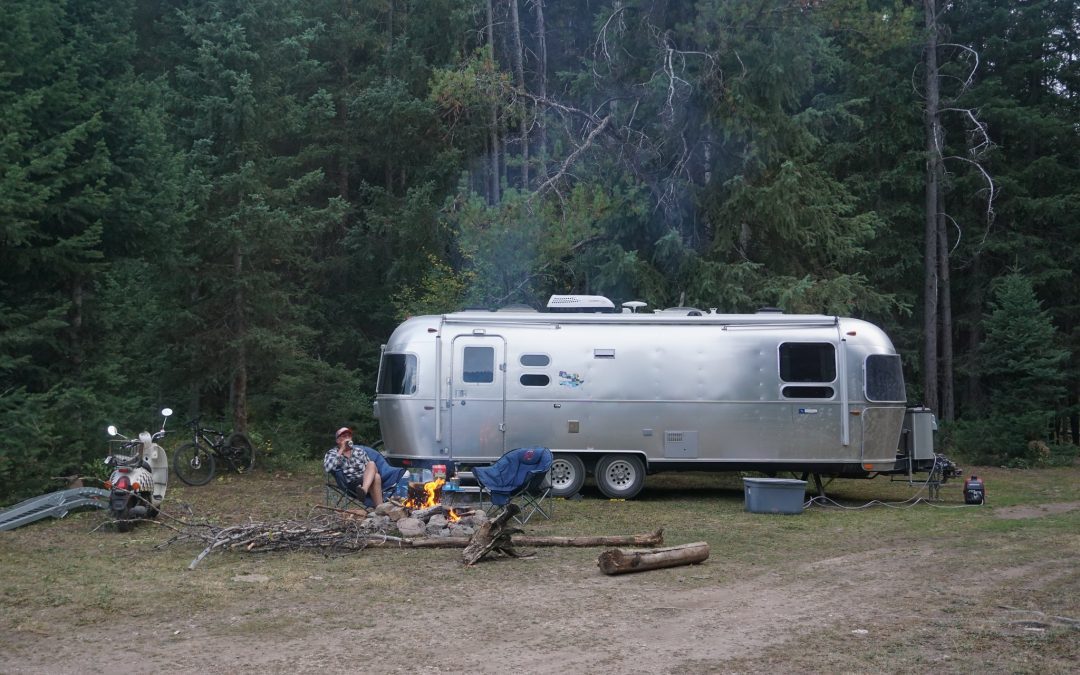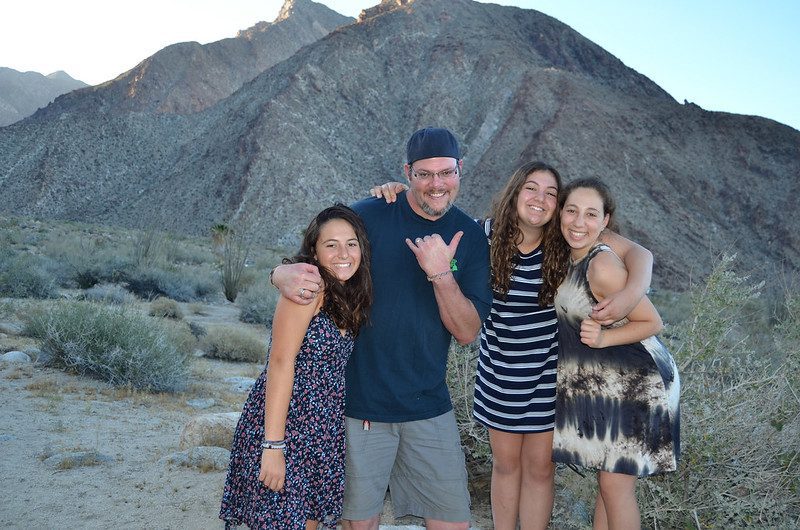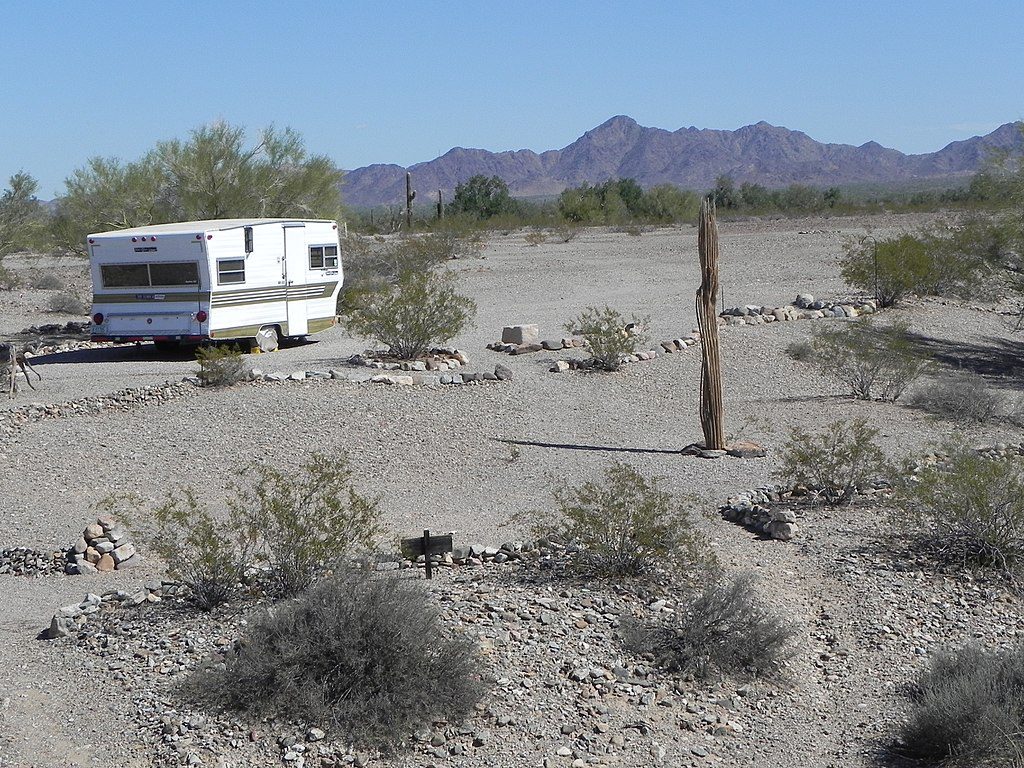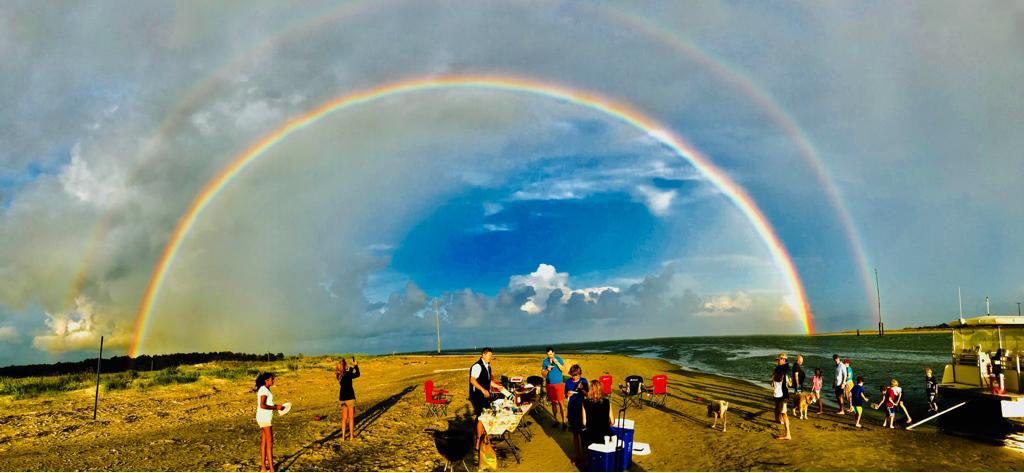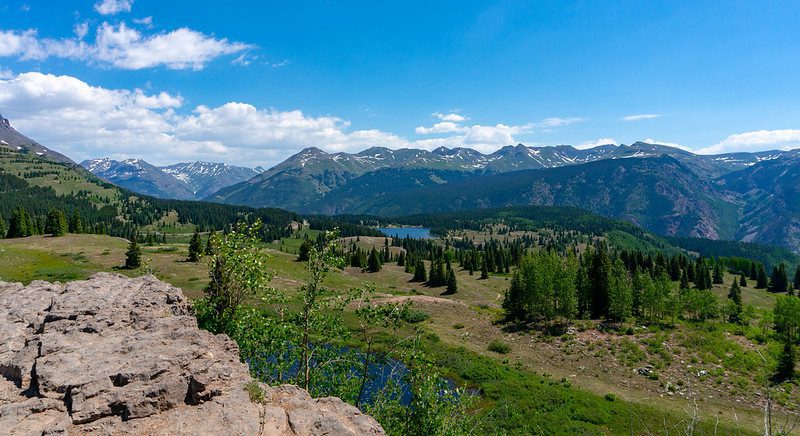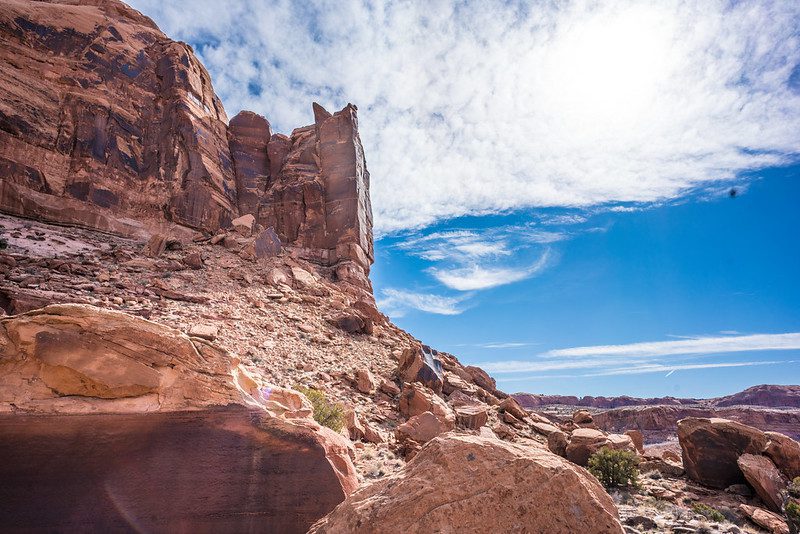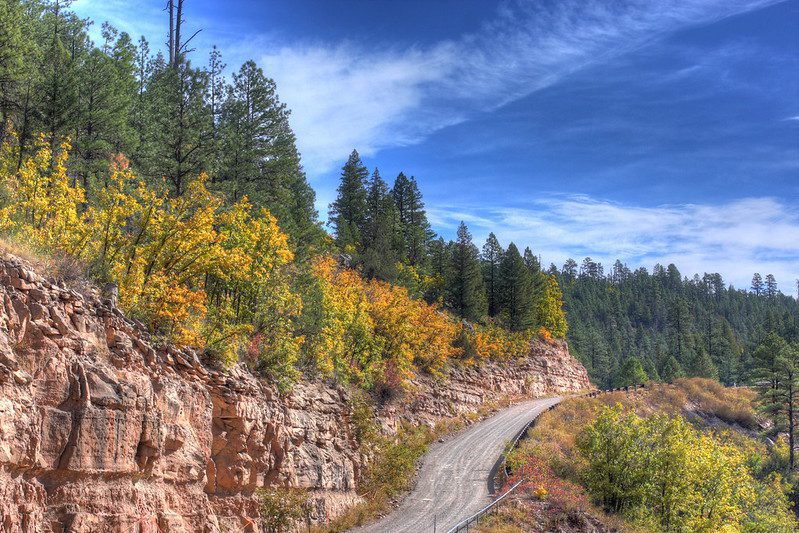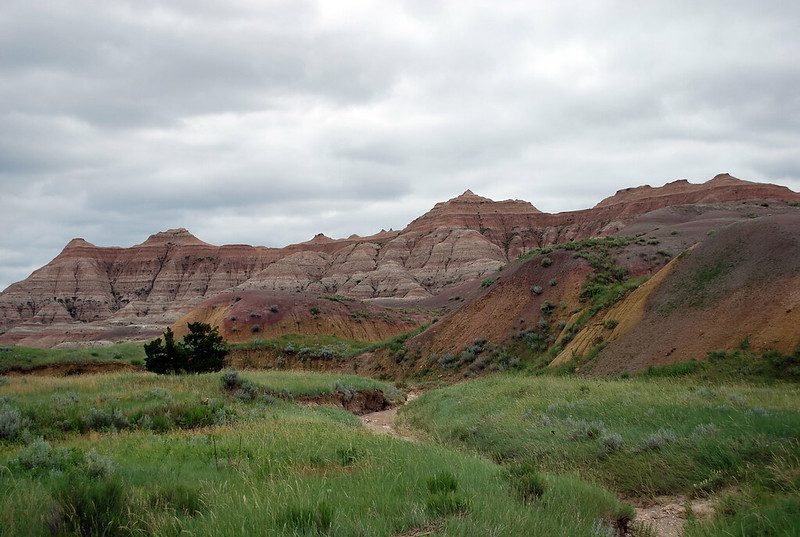Best Free Boondocking Spots in the US for RVers
The notion of primitive camping in wild places is not for everyone, but for adventurous, intrepid travelers that don’t mind the mystery and gentle grit of off-the-grid living, the United States offers boundless opportunities for campers and RVers to experience some of the country’s most impressive natural areas- all without dipping into your wallet. From BLM public land (Bureau of Land Management) and National Forest service roads to wildlife areas and state parks and everything in between, here’s our roundup of the best free boondocking spots in the US, including popular destinations like Anza Borrego Desert State Park, Quartzsite, Arizona, and Lake Whitney, Texas.
Image Credit: Carrie Kaufmann/ flickr
RV Boondocking at Anza Borrego Desert State Park, California
California is one of the most traveled-to and populous states in the country, so it’s no surprise that free dispersed campsites can be a bit harder to find. Boondockers traveling to Southern California can find solace in Anza Borrego State Park, though: the state’s largest state park, and the only one that allows permit-free and fee-free primitive camping. With hundreds of miles of slot canyon hiking trails and remote dirt roads that truly make you feel like you’re off the beaten track- and sometimes, on another planet! – it’s quite the dose of solitude, yet you’re still under two hours from the bustling San Diego coast. Our insider tip: try and go during Spring to catch the park’s rainbow carpet of wildflowers!
Anza-Borrego Desert State Park is a popular destination for RV boondocking, with several designated boondocking areas within the park. Here is a sample itinerary for RV boondocking in Anza Borrego Desert State Park:
- Before you arrive, make sure to purchase a California State Parks annual pass or a single-day pass, as these are required for entry to the park.
- Once you arrive at the park, head to one of the designated boondocking areas, such as the Upper Coyote Canyon Primitive Camping Area or the Yaqui Meadows Boondocking Area. These areas offer secluded campsites with beautiful views of the desert landscape.
- Spend your days exploring the park’s many hiking trails and attractions. Some popular hikes include the Palm Canyon Trail, the Borrego Palm Canyon Nature Trail, and the Cactus Loop Trail.
- Be sure to also visit the Anza-Borrego Desert State Park Visitor Center, where you can learn more about the park’s history and wildlife, and pick up maps and other helpful information.
- In the evenings, relax at your campsite and enjoy the beautiful desert sunset. Be sure to bring plenty of water and supplies, as there are no services available in the boondocking areas.
Overall, Anza-Borrego Desert State Park is a great destination for RV boondocking, offering beautiful scenery, abundant wildlife, and plenty of opportunities for outdoor adventure.
Image Credit: My Public Lands Magazine via Wikimedia Commons
RV Boondocking in Quartzite, Arizona
Quartzite, a small Arizona desert town halfway between Phoenix and Palm Springs, has a bit of a legend’s lore attached to it. While there certainly may be more scenic places to boondock in Arizona, part of Quartzite’s allure is the community it attracts, especially during the winter months, when the town’s population swells tenfold, and it hosts several mineral and gem shows, quirky swap meets, and a handful of notable rendezvous geared toward those living on the road. It’s nearly all primitive camping, and you can park as close or as far away from others as you wish, but the most memorable part of your stay will probably be the conversations and connections with like-minded travelers and characterful rubber tramps, so don’t stray too far from the action
Quartzite, Arizona is a popular destination for RV boondocking, with several designated boondocking areas in and around the town. Here is a sample itinerary for RV boondocking in Quartzite:
- Before you arrive, make sure to purchase a National Parks pass, as this is required for entry to many of the boondocking areas in and around Quartzite.
- Once you arrive in Quartzite, head to one of the designated boondocking areas, such as the Plomosa Road Boondocking Area or the La Posa Long Term Visitor Area. These areas offer secluded campsites with stunning views of the desert landscape.
- Spend your days exploring the area’s many hiking trails, off-road trails, and other outdoor attractions. Some popular hikes include the Lost Dutchman State Park, the Buckskin Mountain State Park, and the Joshua Tree Forest.
- Be sure to also visit the Quartzsite Pow Wow, a popular annual event that features Native American dance competitions, crafts, and food.
- In the evenings, relax at your campsite and enjoy the beautiful desert sunset. Be sure to bring plenty of water and supplies, as there are no services available in the boondocking areas.
Overall, Quartzite is a great destination for RV boondocking, offering beautiful scenery, abundant outdoor activities, and a rich cultural heritage.
Image Credit: RamiLudo, CC BY-SA 4.0, via Wikimedia Commons
Best Boondocking Spots at Lake Whitney, Texas
Located right in the heart of Texas and less than 90 minutes from the cities of Dallas and Waco, beautiful Lake Whitney is a boondocker’s hidden treasure. Maintained by the Army Corps of Engineers, the entire lake- which is a controlled reservoir on a section of the Brazos River- offers several different areas of free primitive campsites, most of which come with a fire ring, a shaded picnic table, and a spectacular view of the water. The public access is superb, with endless opportunities for swimming, fishing, and boating, and the abundance of trees around the sites makes you feel like you have your own slice of lakefront paradise. It’s a fantastic retreat for campers looking to beat the Texas heat.
Lake Whitney is a popular destination for RV boondocking, with several designated boondocking areas around the lake. Here is a sample itinerary for RV boondocking at Lake Whitney:
- Before you arrive, make sure to purchase a Texas State Parks pass, as this is required for entry to many of the boondocking areas around Lake Whitney.
- Once you arrive at Lake Whitney, head to one of the designated boondocking areas, such as the Lone Star Primitive Camping Area or the Hilltop Camping Area. These areas offer secluded campsites with stunning views of the lake and surrounding landscape.
- Spend your days exploring the lake and its many recreational activities, such as swimming, boating, fishing, and water sports.
- Be sure to also visit the Lake Whitney State Park, where you can learn more about the lake’s history and wildlife, and pick up maps and other helpful information.
- In the evenings, relax at your campsite and enjoy the beautiful lake sunset. Be sure to bring plenty of water and supplies, as there are no services available in the boondocking areas.
Overall, Lake Whitney is a great destination for RV boondocking, offering beautiful scenery, abundant water activities, and plenty of opportunities for outdoor adventure.
Image Credit: Stefan Serena / flickr
RV Boondocking in San Juan National Forest, Colorado
Colorado makes a strong case as one of the very top states for truly epic boondocking experiences, and for good reason: the dispersed camping is often very dispersed, and the storybook views you’ll find from many sites are hard to beat. Some of our favorite areas lay within the rugged, awe-inspiringly beautiful San Juan National Forest, close to the towns of Durango, Silverton, Ouray, and Telluride. The forest service roads you’ll have at your disposal are seemingly endless, and you can take your pick based on what your vehicle can handle.
While trickier during the snowy winter months, summer and the shoulder seasons offer crisp high elevation air, and more outdoor activities to keep you busy than you’ll know what to do with.
San Juan National Forest is a popular destination for RV boondocking, with several designated boondocking areas within the forest. Here is a sample itinerary for RV boondocking in San Juan National Forest:
- Before you arrive, make sure to purchase a National Parks pass, as this is required for entry to many of the boondocking areas within San Juan National Forest.
- Once you arrive at the forest, head to one of the designated boondocking areas, such as the Lemon Reservoir Primitive Camping Area or the East Canyon Primitive Camping Area. These areas offer secluded campsites with beautiful views of the forest and surrounding landscape.
- Spend your days exploring the forest’s many hiking trails and attractions. Some popular hikes include the San Juan Skyway Scenic Byway, the Chicago Basin, and the Weminuche Wilderness.
- Be sure to also visit the San Juan National Forest Visitor Center, where you can learn more about the forest’s history and wildlife, and pick up maps and other helpful information.
- In the evenings, relax at your campsite and enjoy the beautiful forest sunset. Be sure to bring plenty of water and supplies, as there are no services available in the boondocking areas.
Overall, San Juan National Forest is a great destination for RV boondocking, offering beautiful scenery, abundant wildlife, and plenty of opportunities for outdoor adventure.
Image Credit: Antrell Williams / flickr
Experience RV Boondocking in Moab, Utah
Moab leaves quite an impression with its stately red rock formations and towering desert buttes, and the boondocking options are bound to do the same. From the La Sal Loop Road in Manti La-Sal National Forest- oh, the views! – to Klondike Bluffs Road on BLM land just outside of town, places with dispersed camping are far and wide, and often offer a gateway to adventure right outside your doorstep, which is probably why you’re in Moab to begin with! Although a bit further from the city, there are plenty of accessible public land pull-offs right outside of Canyonlands National Park, too, if you’re looking for a quick gateway into the park.
Moab, Utah is a popular destination for RV boondocking, with several designated boondocking areas in and around the town. Here is a sample itinerary for RV boondocking in Moab:
- Before you arrive, make sure to purchase a National Parks pass, as this is required for entry to many of the boondocking areas in and around Moab.
- Once you arrive in Moab, head to one of the designated boondocking areas, such as the Kane Creek Road Boondocking Area or the Hidden Valley Boondocking Area. These areas offer secluded campsites with stunning views of the desert landscape.
- Spend your days exploring the area’s many hiking trails, off-road trails, and other outdoor attractions. Some popular hikes include the Arches National Park, the Canyonlands National Park, and the Dead Horse Point State Park.
- Be sure to also visit the Moab Information Center, where you can learn more about the area’s history and attractions, and pick up maps and other helpful information.
- In the evenings, relax at your campsite and enjoy the beautiful desert sunset. Be sure to bring plenty of water and supplies, as there are no services available in the boondocking areas.
Overall, Moab is a great destination for RV boondocking, offering beautiful scenery, abundant outdoor activities, and a rich cultural heritage.
Image Credit: Kevin Dooley / flickr
RV Boondocking in Coconino National Forest, Arizona
Coconino National Forest blankets an expansive area in and around the flourishing cities of Sedona and Flagstaff, and you could probably spend years trying to explore all the boondock- able service roads in the area and still not see them all. Depending on how far you’re looking to stray from the main trailheads and attractions- and more importantly, depending on the off-road capabilities of your home on wheels- you’ll find something that suits your style and comfort level. The closer to Grand Canyon National Park you get, the tougher it may be to simply pull up and snag a spot, but if you look hard enough, trust us, you’ll find something.
Coconino National Forest is a popular destination for RV boondocking, with several designated boondocking areas within the forest. Here is a sample itinerary for RV boondocking in Coconino National Forest:
- Before you arrive, make sure to purchase a National Parks pass, as this is required for entry to many of the boondocking areas within Coconino National Forest.
- Once you arrive at the forest, head to one of the designated boondocking areas, such as the West Clear Creek Wilderness Area or the Oak Creek Canyon Primitive Camping Area. These areas offer secluded campsites with beautiful views of the forest and surrounding landscape.
- Spend your days exploring the forest’s many hiking trails and attractions. Some popular hikes include the Kachina Trail, the Mount Elden Lookout Trail, and the Humphreys Peak Trail.
- Be sure to also visit the Coconino National Forest Visitor Center, where you can learn more about the forest’s history and wildlife, and pick up maps and other helpful information.
- In the evenings, relax at your campsite and enjoy the beautiful forest sunset. Be sure to bring plenty of water and supplies, as there are no services available in the boondocking areas.
Overall, Coconino National Forest is a great destination for RV boondocking, offering beautiful scenery, abundant wildlife, and plenty of opportunities for outdoor adventure.
Image Credit: Bri Weldon / flickr
Experience RV Boondocking at Buffalo Gap National Grassland, South Dakota
It’s hard to grasp the vastness of Buffalo Gap National Grassland until you’ve spent a few days camping within the area. With sweeping prairie vistas, alienesque rock outcroppings and slingshot views of neighboring Badlands National Park, this sprawling piece of nature in southwest South Dakota is a boondocker’s delight, and camping seclusion at its finest. A couple of the most desirable areas to drop anchor are Badlands Overlook and Nomad View, sections of dusty, bumpy roads teetering alongside cliffs that offer surreal vistas of the Buffalo Gap and the distant Black Hills. It’s a great place to truly unwind and feel the scope of endless skies and grasslands on the horizon.
Buffalo Gap National Grassland is a popular destination for RV boondocking, with several designated boondocking areas within the grassland. Here is a sample itinerary for RV boondocking in Buffalo Gap National Grassland:
- Before you arrive, make sure to purchase a National Parks pass, as this is required for entry to many of the boondocking areas within Buffalo Gap National Grassland.
- Once you arrive at the grassland, head to one of the designated boondocking areas, such as the Fort Pierre National Grassland or the Cactus Flat Primitive Camping Area. These areas offer secluded campsites with beautiful views of the grassland and surrounding landscape.
- Spend your days exploring the grassland’s many hiking trails and attractions. Some popular hikes include the Castle Trail, the Red Shirt Table Trail, and the Medicine Root Loop Trail.
- Be sure to also visit the Buffalo Gap National Grassland Visitor Center, where you can learn more about the grassland’s history and wildlife, and pick up maps and other helpful information.
- In the evenings, relax at your campsite and enjoy the beautiful grassland sunset. Be sure to bring plenty of water and supplies, as there are no services available in the boondocking areas.
Overall, Buffalo Gap National Grassland is a great destination for RV boondocking, offering beautiful scenery, abundant wildlife, and plenty of opportunities for outdoor adventure.
Image Credit: Intermountain Forest Service, USDA Region 4 Photography / flickr
RV Boondocking in Caribou-Targhee National Forest, Idaho/Wyoming Border
Both Wyoming and Idaho have their own long lists of spectacular boondocking areas- like the Sawtooth in Idaho or the Bridger-Teton Wilderness in Wyoming, for starters- but one of our favorite under-the-radar spots is the Caribou-Targhee National Forest, which extends its sprawling woodlands, winding rivers and granite peaks into both states. The primitive campsites which straddle the Idaho-Wyoming border near Moose Creek are especially inspiring and are bound to offer a solitary wilderness experience- and perhaps even some wildlife sightings! – you won’t soon forget.
Caribou-Targhee National Forest is a popular destination for RV boondocking, with several designated boondocking areas within the forest. Here is a sample itinerary for RV boondocking in Caribou-Targhee National Forest:
- Before you arrive, make sure to purchase a National Parks pass, as this is required for entry to many of the boondocking areas within Caribou-Targhee National Forest.
- Once you arrive at the forest, head to one of the designated boondocking areas, such as the Greys River Ranger District or the Palisades Ranger District. These areas offer secluded campsites with beautiful views of the forest and surrounding landscape.
- Spend your days exploring the forest’s many hiking trails and attractions. Some popular hikes include the Teton Crest Trail, the Table Mountain Trail, and the Jedediah Smith Wilderness.
- Be sure to also visit the Caribou-Targhee National Forest Visitor Center, where you can learn more about the forest’s history and wildlife, and pick up maps and other helpful information.
- In the evenings, relax at your campsite and enjoy the beautiful forest sunset. Be sure to bring plenty of water and supplies, as there are no services available in the boondocking areas.
Overall, Caribou-Targhee National Forest is a great destination for RV boondocking, offering beautiful scenery, abundant wildlife, and plenty of opportunities for outdoor adventure.
Resources
- Bureau of Land Management (BLM) – https://www.blm.gov/
- Anza-Borrego Desert State Park Official Website – https://www.parks.ca.gov/?page_id=638
- San Juan National Forest Official Website – https://www.fs.usda.gov/sanjuan/
- Lake Whitney Official Website – https://www.swf-wc.usace.army.mil/whitney/
- Coconino National Forest Official Website – https://www.fs.usda.gov/coconino
- Buffalo Gap National Grassland: https://www.fs.usda.gov/recarea/nebraska/recarea/?recid=10685
- Caribou-Targhee National Forest: https://www.fs.usda.gov/ctnf
In conclusion, there are many great camping areas across the United States, and the ones mentioned in this blog post are just a few examples. The Bureau of Land Management (BLM), Anza-Borrego Desert State Park, San Juan National Forest, Lake Whitney, Coconino National Forest, Buffalo Gap National Grassland, and Caribou-Targhee National Forest all offer unique experiences for campers of all levels. From desert landscapes to grassy plains to dense forests, these areas provide opportunities for outdoor enthusiasts to connect with nature and explore the great outdoors. Whether you’re a seasoned camper or a first-time adventurer, these camping areas are definitely worth considering for your next outdoor adventure.
Featured Image Credit: RV Hive/ flickr

